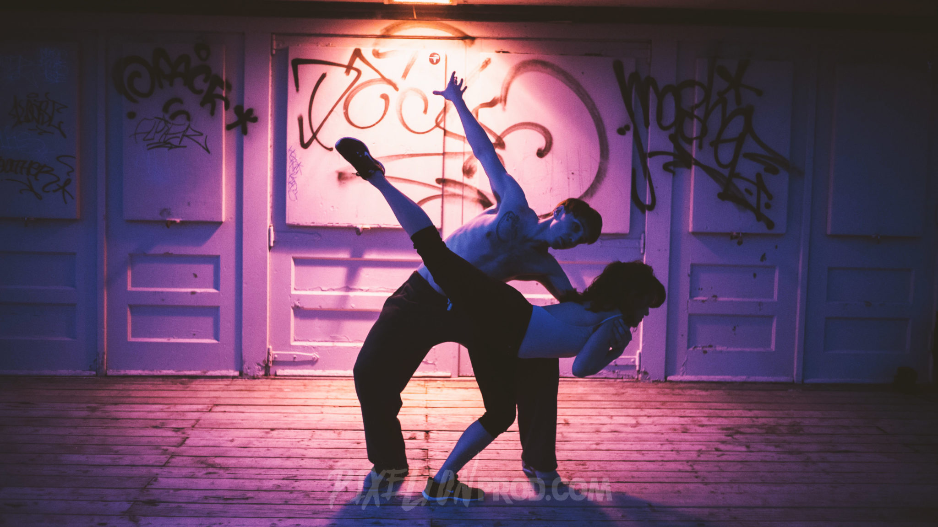
Concert dance forms are usually taught in a group setting with a warm up, basic elements, and choreography taught throughout the class. Ballet classes usually involve traditional movements such as plié, tendu, and port de bras. Modern dance might have similar elements but done in parallel foot positions, sitting down or with off center torso placements. Contemporary will add floorwork, improvisation, and somatic exercises to these elements. Contact Improvisation will develop partnering skills, and Dance Theater as well as Post Modern composition will enhance choreographic and creative abilities of the students.
Ballet
Developed during the Italian Renaissance in the 15th century and adopted by the court of Louis the XIV in France this dance form has become synonymous with ‘high art’ definitions of dance. Highly popular in Europe, ballet came to be the movement-based counterpart to opera and eventually its own concert form as it moved from courts to performance halls. It was well received in Russia, which produced many great dancers who later moved to North America and spread the form there. Les Ballet Russes, toured Europe and USA with the help of Diaghilev, Pavlova, and Nijinsky and initiated the birth o American ballet. The periods of ballet shifted from classical to romantic to neo-classical, to contemporary. The four main methods are Ceccetti (Italian), Vaganova (Russian), French (Various founders), and RAD (English). This dance form is highly formalized and technical but can also be used as a way to gain body awareness and coordination for recreational dancers.
Modern Dance
Modern dance was born in opposition to the formal conventions and elitism in classical ballet. The two main strands of modern dance stem from Germany, and the USA in the mid twentieth century. German modern dance developed as theatrical form embracing improvisation, introspection, and set design. Meanwhile, American modern dance examined the non-classical form, eastern philosophies, and choreographic explorations. Mary Wigman and Rudolph Von Laban were the pioneers of German modern dance while Martha Graham, Merce Cunningham, and Jose Limon were developing the American version of the form. Today, modern dance is still taught at many conservatories and post secondary institutions based on one or a selection of these styles.
Contemporary Dance
Is a broad term describing the evolution of modern and post modern dance into several strands of dance styles developed by choreographers in the end of the 20th century. This form generally aims to democratize dance practice and allow for individual freedom of expression. It uses both floor work and aerial skills to project non-conventional expression through movement looking to express profound ideas about human experience and behaviour. While there are no definitive singular proponents of contemporary dance, some of the current choreographers known in the field include names such as Akhram Khan and William Forsythe. Contemporary dance aims to combine cultural dances, such as Native or Indian dance, with western contemporary forms of movement such as Contact Improvisation and German Dance Theater.
Contact Improvisation
Originally developed as a teaching tool by Steve Paxton in the 1960, this dance form uses the sense of touch to develop improvised movement between two or more practitioners. It evolved into a worldwide phenomenon which is used as a partnering exercise and performance development tool for contemporary dance. It is non structured besides basic weight bearing training and classes are usually conducted in free flowing sessions called ‘jams’, stemming from musicians slang for informal playing sessions.
Dance Theater
Dance Theater evolved from German modern dance, and focuses on evoking inner states of being through movement and theatrical design. Mary Wigman and Rudolph Von Laban were the pioneers of that tradition with contemporary choreographers such as Pina Bausch and Sasha Waltz continuing their legacy. This form is more focused on intent and expression than technique. It is used as composition tool in contemporary dance and is popular around European theaters and dance institutions.
Post Modern composition
Post modern dance developed in the post war period in USA. This form adopts the methods of other art forms such as painting and music to question the definition of dance. It posits that anything can be dance and that anyone can dance. The most renowned proponents of this form were the Judson Dance Theater group in the 1960s. They were sound artists like John Cage, dancers like Merce Cunningham, and conceptual artists like Robert Morris. They developed innovative choreographic tools and showcased their work during gatherings called ‘happenings’ at the Judson church.

